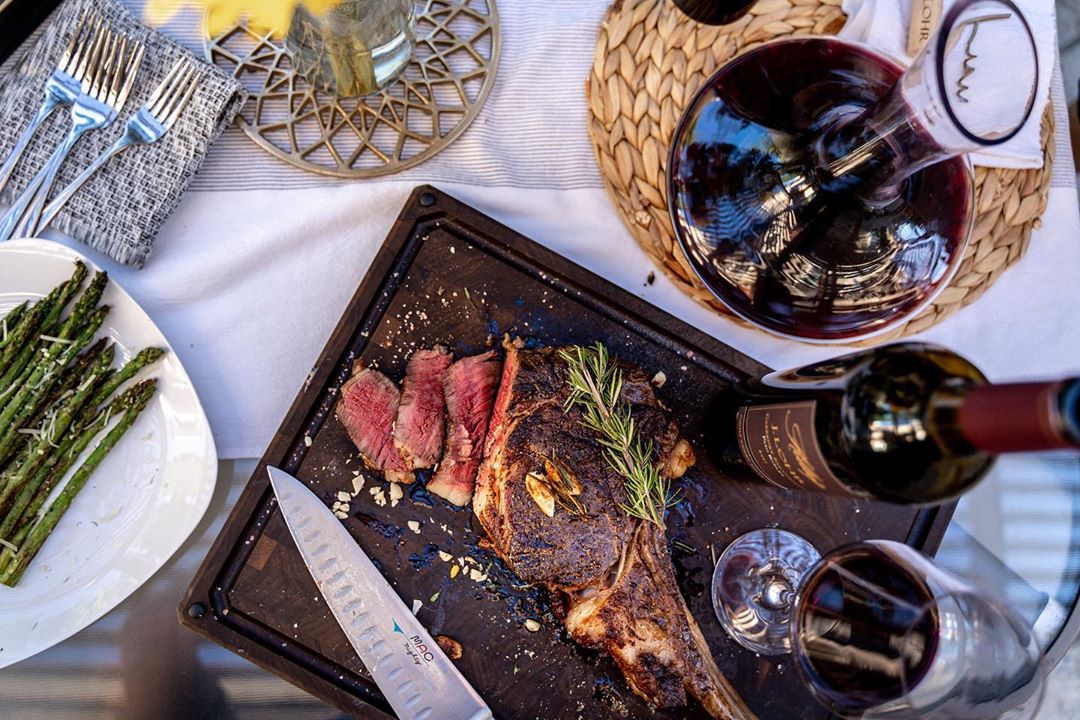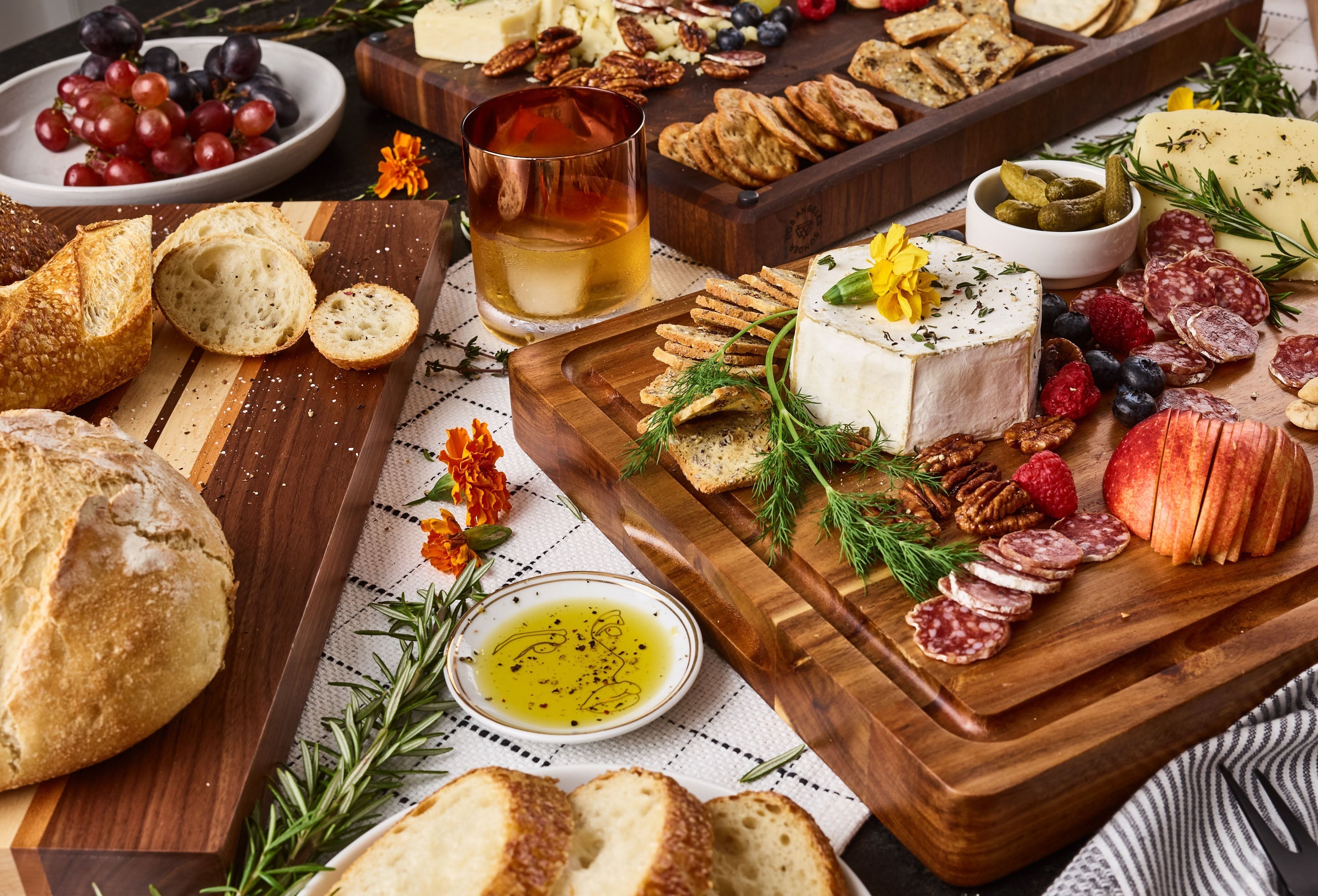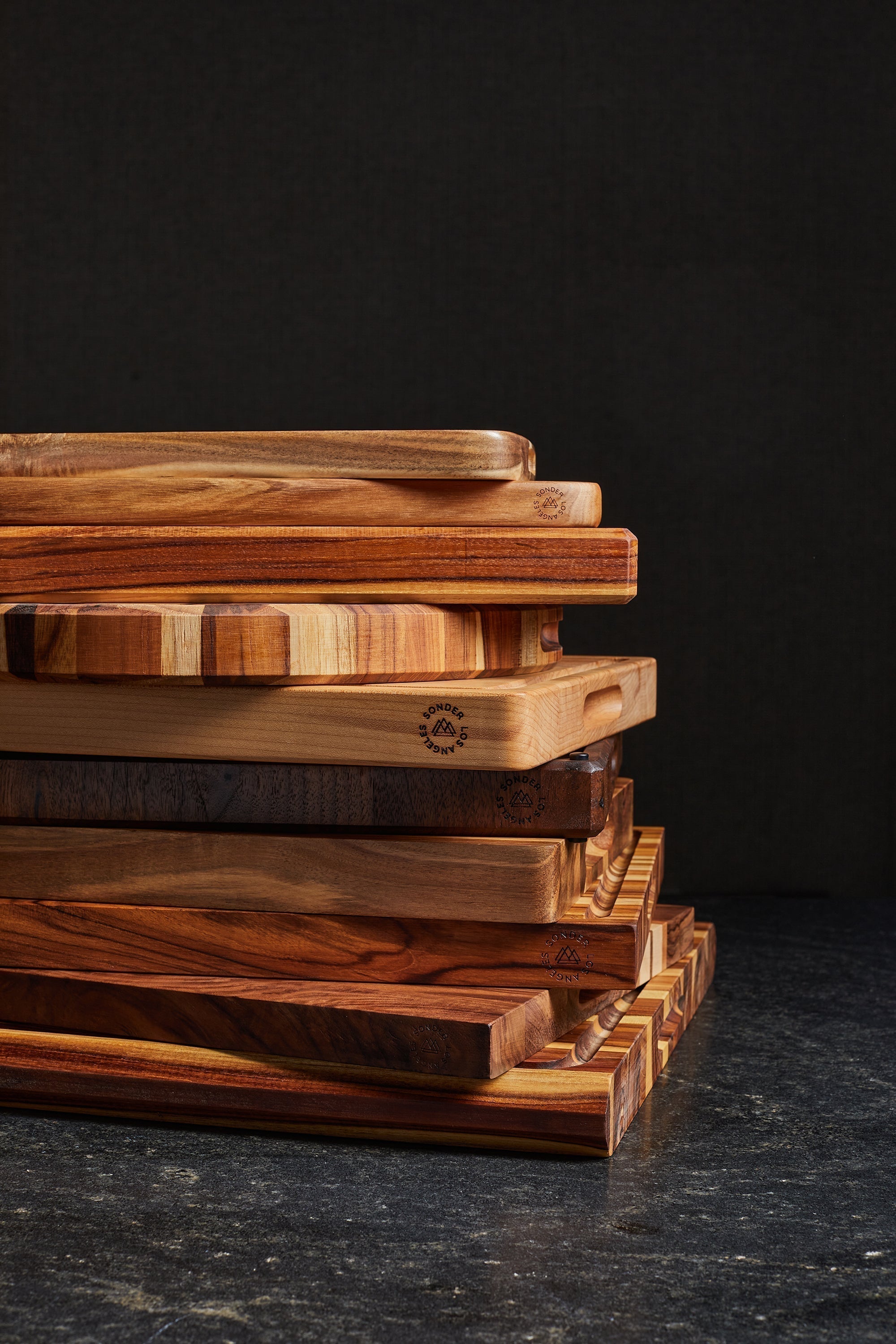
Wood Cutting Boards and Meat–A Tale as Old As Time
While innovation is at the very heart of the culinary scene, there are some relationships in the kitchen that just go so well together that, over time, it’s hard to imagine them with anything else. They’re just made for each other. Wine and chocolate. Butter and popcorn. Peanut butter and jelly. Ice cream and apple pie. John Legend and Chrissy Tiegen. OK…we know that last one isn’t food, but their relationship, in and out of the kitchen, is a pairing we can’t imagine any differently.
Buuuut, getting back to the kitchenware realm, surprising to some people, meat and wood cutting boards are also a couple that has inspired #relationshipgoals for over a century. Imbued with many favorable characteristics, wood is a natural partner for meat.
Let’s explore this relationship’s ‘green flags’, so that the next time you ask yourself, which cutting board is best for meat, you’ll see why wood makes the top of the list.
Naturally Resistant to Bacteria:
- According to a study conducted by the University of Wisconsin, when leaving bacteria on a wooden cutting board, 99.9% died within minutes, whereas bacteria left on a plastic surface was generally unaffected. The fine grain structure found in hardwoods like Maple and Acacia, or high natural oil content in Teak, makes these wood cutting boards resistant to moisture hindering bacteria’s ability to thrive.
- Still worried about bacteria? Pro-tip: Try a cutting board designed with two functional sides. You can use one side with a juice groove for cutting meat, and the other for fruits, veggies, serving, etc. All of our boards are designed with reversibility in mind; take a look at our full collection here.
Knife Friendly:
- Wood is much more resilient against knife marks and gouges compared to its material counterparts (plastic, bamboo, composite, or glass), which keeps your knives sharper for longer. A sharper knife is safer to handle when slicing through your meaty creations, and also leaves fewer divots in your board for bacteria to grow.
- Looking to take your relationship to the next level? Consider an end grain cutting board, whose construction features ‘self-healing’ properties that are even gentler on your knives and make carving meat a dream. Check out our Alfred, Welton, or Vincent boards to learn more.
Durable:
- Wood cutting boards have been a top choice amongst butchers since the late 1880s, and continue to be a household favorite, thanks to their durability. When cared for properly, wood cutting boards can provide many years of use. Which, in the long run, is a win for your money and the environment.
- Want a tried and true classic? Try our Winsome Maple, which is made right here in the USA! Julia Childs would approve.
Now all of that being said, no matter how perfect a match a ‘couple’ may be, even the best relationships take work! So here are some best practices when using meat on your wood cutting board to keep the relationship thirty, flirty, and thriving.
Clean Properly:
- Anytime meat comes into contact with your cutting board, be sure to hand washi it with warm soapy water, towel dry, and then let air dry standing up on its side. Just be sure to use mild dish soap- harsh soaps with alcohol (like Dawn Powerwash) can strip the wood's natural oils, causing it to dry out.
Oil Regularly:
- Wood cutting boards need a little TLC, with regular applications (every 2-3 weeks) of food grade mineral oil or beeswax. This helps keep the surface from absorbing moisture which can lead to cracking or warping.
For best cleaning and care practices, check out our Care Page here.

